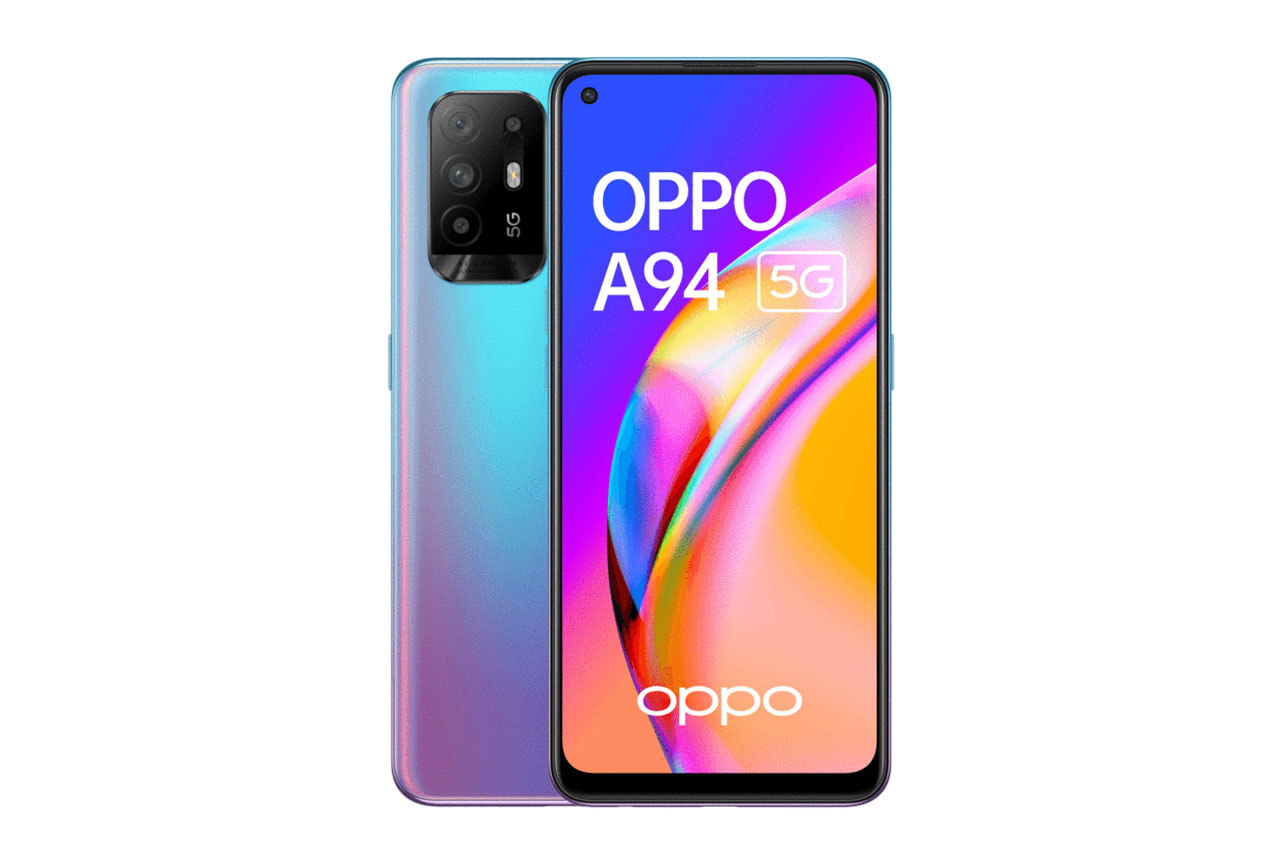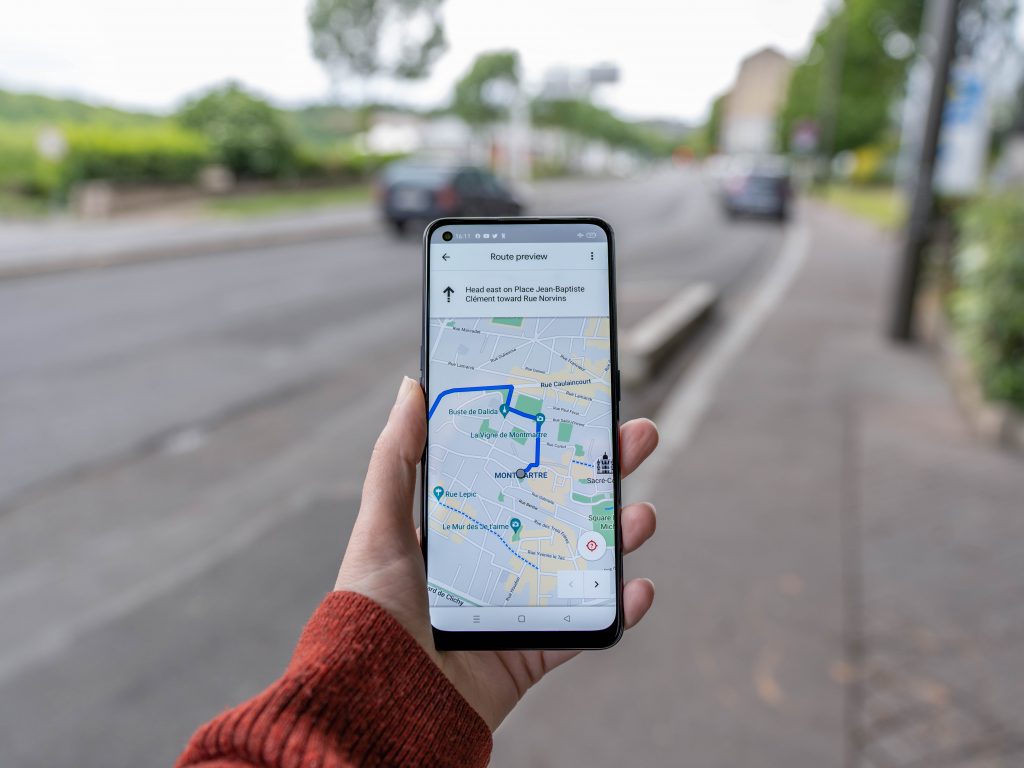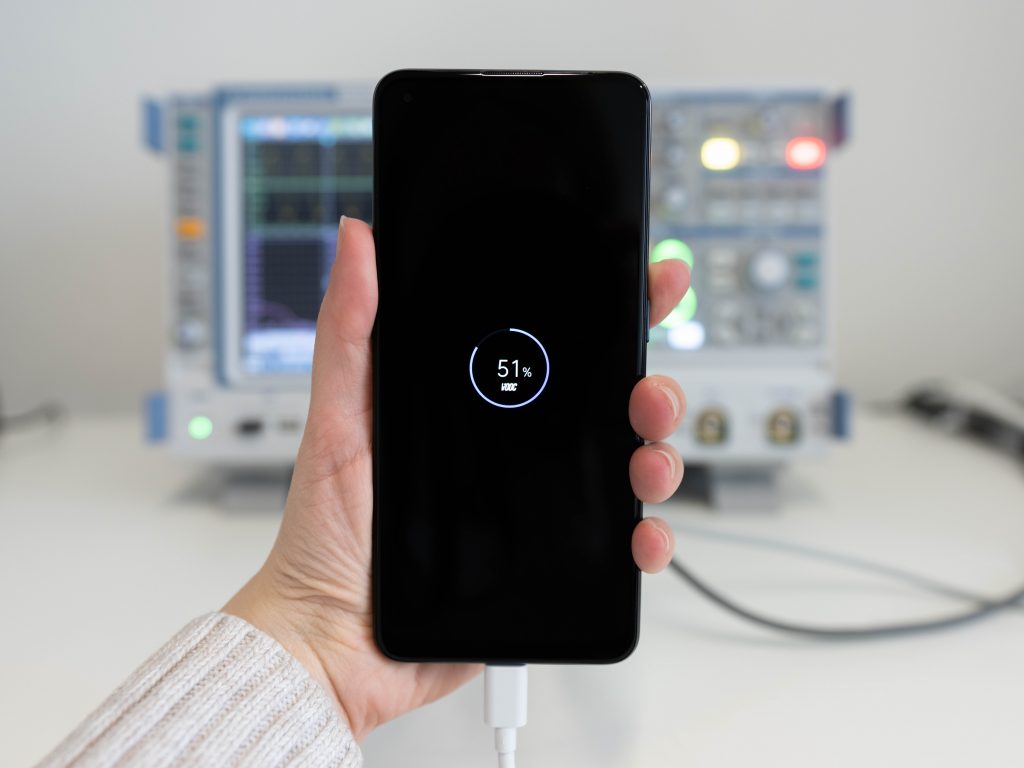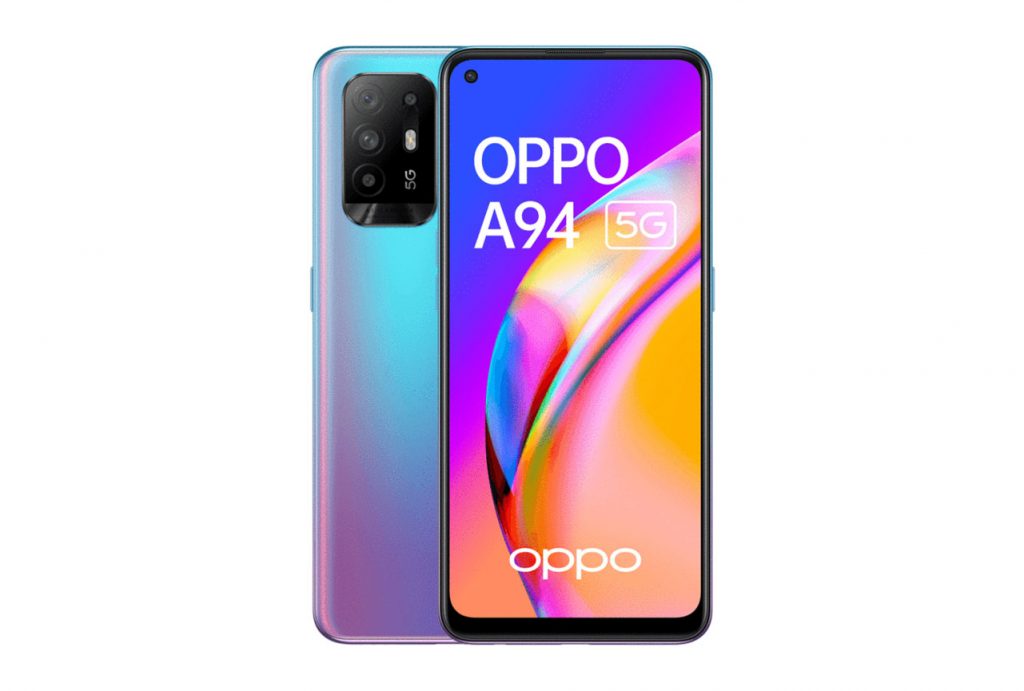Entering the market in April 2021, the Oppo A94 5G comes with an FHD+ AMOLED display and a quad-camera setup with a 48 MP main camera, and lands in our Advanced smartphone segment ($200-399). We put the Oppo A94 5G through our comprehensive suite of battery tests and present a summary of the results here.
Key specifications:
- Battery capacity: 4310 mAh
- 30W charger included
- 6.43-inch, 1080 x 2400, 60 Hz AMOLED display
- MediaTek Dimensity 800U 5G (7 nm) chipset
- Tested RAM / storage combination: 8 GB + 128 GB
About DXOMARK Battery tests: For scoring and analysis in our smartphone battery reviews, DXOMARK engineers perform a variety of objective tests over a week-long period both indoors and outdoors. This article highlights the most important results of our testing. (See our introductory and how we test articles for more details about our smartphone Battery protocol.)
Test summary
Scoring
Sub-scores and attributes included in the calculations of the global score.

Oppo A94 5G


Key performances
These key points are derived from the lab measurements during testing and do not figure into the overall score. The lab measurements, however, are used for the overall score.
 73rd
73rd
 27th
27th
Pros
- Battery discharge is extremely efficient
- Considerably lower power consumption than competition for video streaming and video playback
- Provides more than 2 days (58 hours) of autonomy with moderate use
Cons
- Low performance in 3G calling and music streaming in calibrated mode
The Oppo A94 5G’s global score of 82 puts it among the current top 10 devices of our database, where it sits one point above the Oppo Find X3 Neo.
The table below shows the battery capacity, charger, display type and resolution, and processor specifications for the Oppo A94 5G, the Samsung A52 5G ($300-499 High-end segment), and the Xiaomi Redmi Note 10 Pro (Advanced segment).
|
Oppo A94 5G |
Samsung A52 5G |
Xiaomi Redmi Note 10 Pro |
|
| Battery (mAh) |
4310 |
4500 |
5020 |
| Charger |
30W |
15W |
33W |
| Display type |
AMOLED |
AMOLED |
AMOLED |
| Resolution |
1080 x 2400 |
1080 x 2400 |
1080 x 2400 |
| Processor |
MediaTek Dimensity 800U 5G (7 nm) |
Qualcomm Snapdragon 750G 5G (8 nm) |
Qualcomm Snapdragon 732G (8 nm) |
Autonomy (68)
How long a battery charge lasts depends not only on battery capacity, but also other aspects of the phone’s hardware and software. The DXOMARK Battery autonomy score is composed of three performance sub-scores: (1) Stationary, (2) On the go, and (3) Calibrated use cases. Each sub-score comprises the results of a comprehensive range of tests for measuring autonomy in all kinds of real-life scenarios.
With an autonomy score of 68, the Oppo A94 5G comes in 10 points behind Redmi Note 10 Pro (78) and 6 points ahead of the Samsung Galaxy A52 5G.

Stationary
Oppo A94 5G
71
104
A robot housed in a Faraday cage performs a set of touch-based user actions during what we call our “typical usage scenario” (TUS) — making calls, video streaming, etc. — 4 hours of active use over the course of a 16-hour period, plus 8 hours of “sleep.” The robot repeats this set of actions every day until the device runs out of power.
The big difference between the A94 5G’s autonomy score and that of the Redmi Note 10 Pro is attributable to the former having a shorter TUS duration and considerably lower performance during 3G calling and music streaming.
That said, Oppo A94 5G achieves more than 2.5 days in our TUS autonomy tests, which is four hours longer than the Samsung Galaxy A52 5G (which has a bigger battery), but 8 hours less than Xiaomi Redmi Note 10 Pro. During the night, the Oppo A94 5G lost 1.33% battery level per night (which is quite good), though it is slightly higher than the Redmi Note 10 Pro’s loss of only 1%.

On the go
Oppo A94 5G
69
96
Using a smartphone on the go takes a toll on autonomy because of extra “hidden” demands, such as the continuous signaling associated with cellphone network selection, for example. DXOMARK Battery experts take the phone outside and perform a precisely defined set of activities while following the same three-hour travel itinerary for each device.

The Oppo A94 5G puts in a very good on the go performance for social apps, even though the Xiaomi Redmi Note 10 Pro does a bit better. The A94 5G’s results for navigation were just average, however, with the Samsung Galaxy A52 5G lasting some two hours longer in that sub-category.

Calibrated
Oppo A94 5G
66
100
For this series of tests, the smartphone returns to the Faraday cage and our robots repeatedly perform actions linked to one specific use case (such as gaming, video streaming, etc.) at a time. Starting from an 80% charge, all devices are tested until they have expended at least 5% of their battery power.
The Oppo A94 5G is better than its competitors when it comes to streaming video (whether via 4G or WiFi) and video playback. However, it fell behind the Samsung and considerably behind the Xiaomi in our music streaming in 4G and 3G calling use cases.
Charging (83)
The DXOMARK Battery charging score is composed of two sub-scores, Full charge and Quick boost. Full charge tests assess the reliability of the battery power gauge; measure how long it takes to charge a battery from 0% to 80% capacity and from 80% to 100%; and measure how long and how much power the battery takes to go from an indicated 100% to an actual full charge. With the phone at different charge levels (20%, 40%, 60%, 80%), Quick boost tests measure the amount of charge the battery receives after being plugged in for 5 minutes.
Oppo A94 5G showed better performance than either of its rivals, especially during our full charge tests, racking up 6 points over the Xiaomi Redmi Note 10 Pro and a whopping 22 points over the Samsung Galaxy A52 5G.

Full charge
Oppo A94 5G
81
121
The Oppo A94 5G needs just 53 minutes to go from empty to 100% showing on its battery level indicator, and just 6 more minutes beyond that to get its 4310 mAh battery fully charged. Its excellent charging time is 33 minutes faster than the Redmi Note 10 Pro and an hour faster than the Samsung Galaxy A52 5G.


Quick boost
Oppo A94 5G
81
111
By plugging in the smartphone for 5 minutes at less than 40% battery level, users will be able to gain 4 hours and 33 minutes of autonomy — an impressive result that nearly ties that of the Oppo’s competitor, the Redmi Note 10 Pro (4 hour 37 minutes), and far outshines that of the Samsung Galaxy A52 5G (1 hour 49 minutes).
| Oppo A94 5G | Samsung Galaxy A52 5G | Xiaomi Redmi Note 10 Pro | ||
| Autonomy boost (hh:mm) | 20% | 4:33 | 1:49 | 4:37 |
| 40% | 4:29 | 1:51 | 4:04 | |
| 60% | 3:53 | 1:54 | 4:04 | |
| 80% | 2:20 | 1:58 | 2:59 | |
| Percentage boost | 20% | 11.4 % | 5.1 % | 9.4 % |
| 40% | 11.3 % | 5.2 % | 8.3 % | |
| 60% | 9.8 % | 5.4 % | 8.3 % | |
| 80% | 5.9 % | 5.6 % | 6.1 % | |
| Energy consumed | 20% | 2501 mWh | 1235 mWh | 2504 mWh |
| 40% | 2464 mWh | 1260 mWh | 2201 mWh | |
| 60% | 2135 mWh | 1293 mWh | 2201 mWh | |
| 80% | 1284 mWh | 1346 mWh | 1618 mWh |
Efficiency (94)
Our Efficiency score comprises two sub-scores, Charge up and Discharge. Charge up is the efficiency of a full charge (how much energy is drained from the wall outlet vs the energy capacity of the battery, as well as the efficiency of the charger and its residual consumption). Discharge is how much current the smartphone drains from the battery when in use (the ratio of battery capacity over autonomy). Better autonomy with a smaller battery means better efficiency.
The Oppo A94 5G showed excellent performance in efficiency — third best in our database to date.

Charge up
Oppo A94 5G
70
105
Although its adapter efficiency is not quite as good as its competitors’, the entire charging system of the Oppo A94 5G is nevertheless more efficient than either the Samsung Galaxy A52 5G or the Xiaomi Redmi Note 10 Pro.

Discharge
Oppo A94 5G
101
121

The Oppo A94 5G has very well-controlled consumption in most use cases, with its performance when streaming video (both via 4G and WiFi) as well as when playing back videos being particularly good. That said, it consumes more power at night than its rivals, and uses more power than the Samsung Galaxy A52 5G when making 3G phone calls.
Conclusion
With the exception of certain specific use cases such as 3G calling and music streaming, the Oppo A94 5G has considerably better discharge efficiency than its rivals. Its charging time is good, and while it doesn’t reach the highest spot for autonomy, the Oppo device’s duration of 2 days and 10 hours with moderate use seats it comfortably in the top half of our database thus far, despite a smaller battery capacity.



DXOMARK encourages its readers to share comments on the articles. To read or post comments, Disqus cookies are required. Change your Cookies Preferences and read more about our Comment Policy.